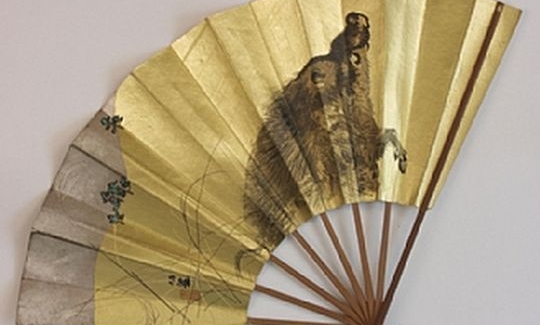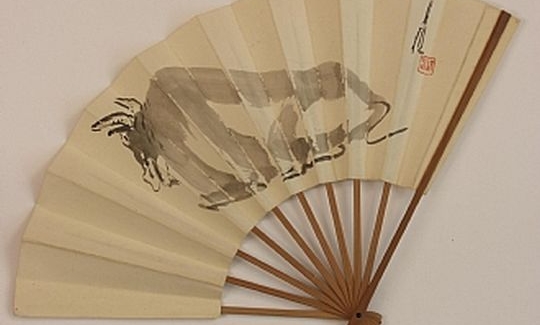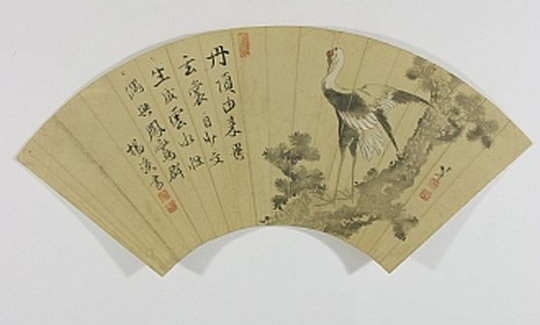The fan is an important accessory in the Japanese culture. Their purpose is not merely for cooling, they are emblems of status and a practical embellishment, used by men and women alike, and they play an important role in the life of the Japanese.
There are two main types of fan in Japan. The first fans were brought from China via Korea during the 6th century CE. These were hard, flat ovals, known in Japan as uchiwa. The familiar folding fan, the ogi or sensu was apparently invented during the reign of the Emperor Tenji (661-672). Both types are still in use, though the folding fan is more popular.
In the past, craftsmen created fans at home, but today only a few still preserve this tradition. The frame of the folding fan is usually made of bamboo, while ivory is used for the more elegant ones. The number of ribs varies between 3 and 80, and they are covered with paper or silk ornamented with painting or calligraphy.
In the Heian era (794-1185) the aristocracy used fans as part of their official garb, and the number of ribs in the fan was adjusted to the status of its owner. The samurai also used fans, known as jinsen, made of pheasant or peacock feathers. However, their battle fans (gunsen, tessen) had iron ribs, and were used as weapons if necessary. It was thus possible to ascertain a person's rank or occupation according to his fan.
Today, Japanese men and women are still using fans. They are exchanged by engaged couples, and it is also customary to present them as gifts. Sometimes they are purely decorative, and sometimes they are used in such events as the tea ceremony, traditional Japanese dances, and the theatre. Those used in the theatre are decorated with figures related to the drama being performed. Those intended for daily use have no specific motifs. The most popular embellishments include: carefully inscribed poetry, calligraphy of Chinese symbols, views, animals, and others.
Fans decorated by famous artists are highly valued in Japan. Because of the special composition necessitated by the curve of the paper, Japanese artists began to cut paper into the fan shape (ogi-e: fan pictures) even when it was not intended for this purpose.
Since fans were constantly in use, many of the paintings on them were spoiled or completely destroyed. Only a few have survived, from which derives their uniqueness.




